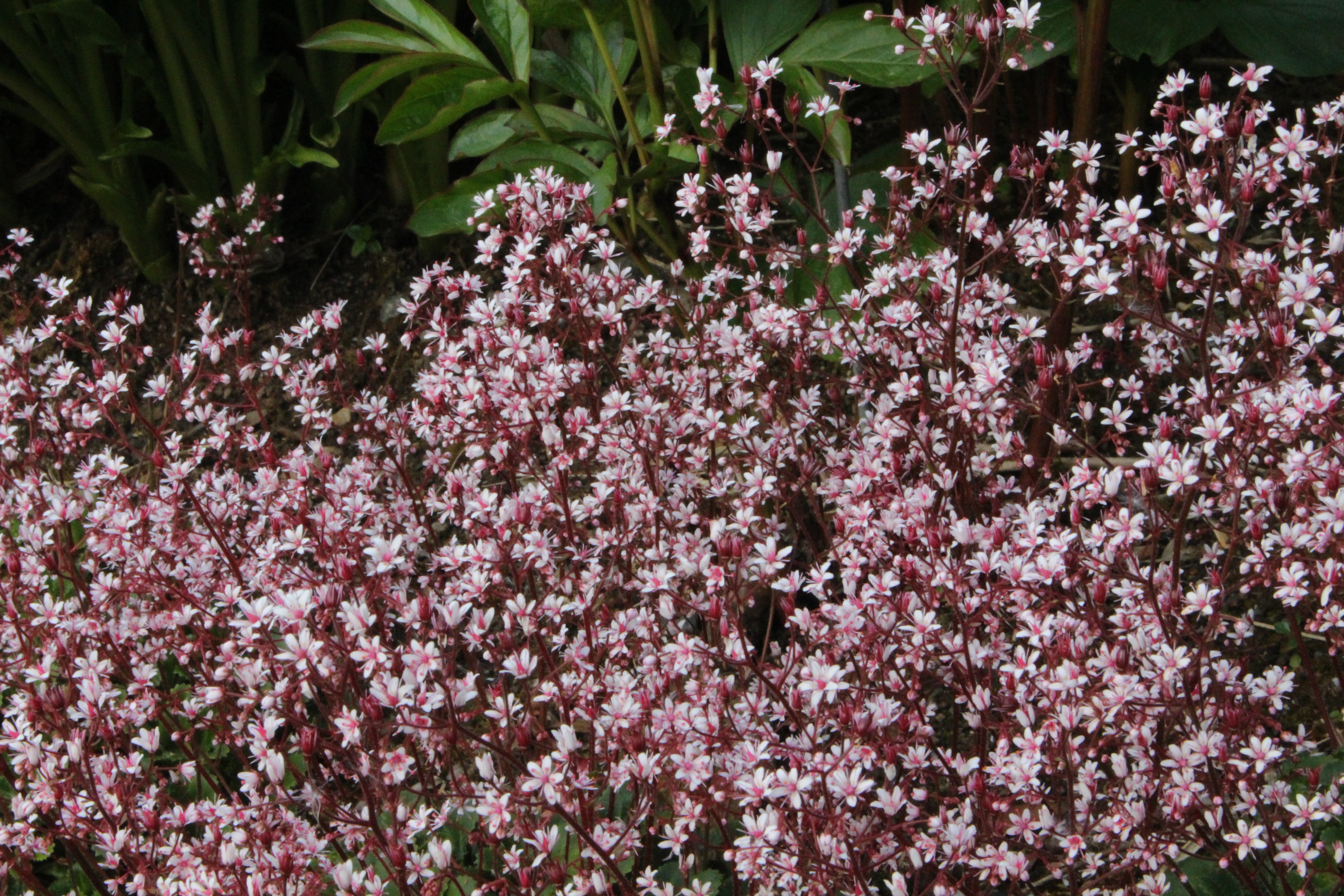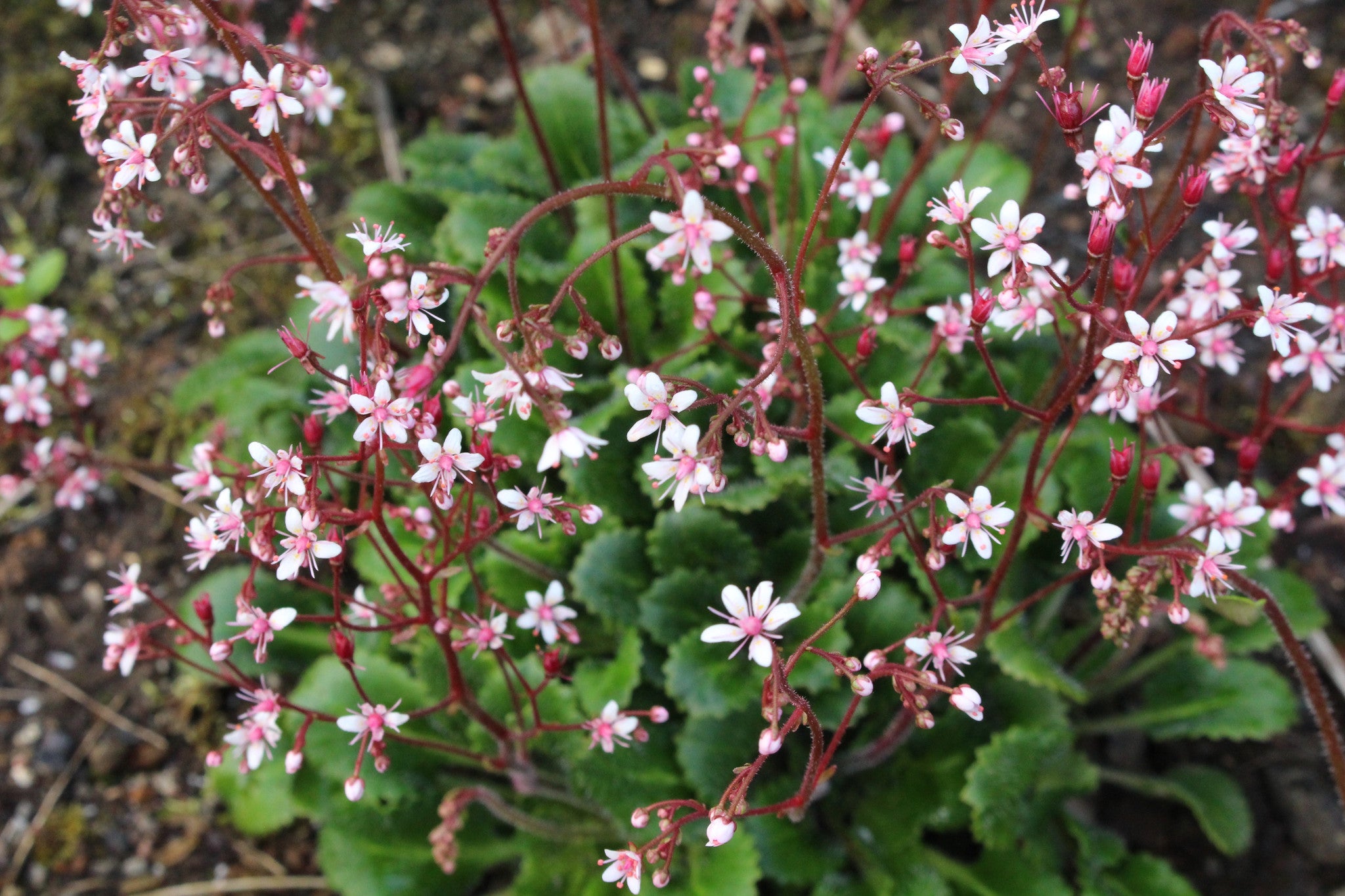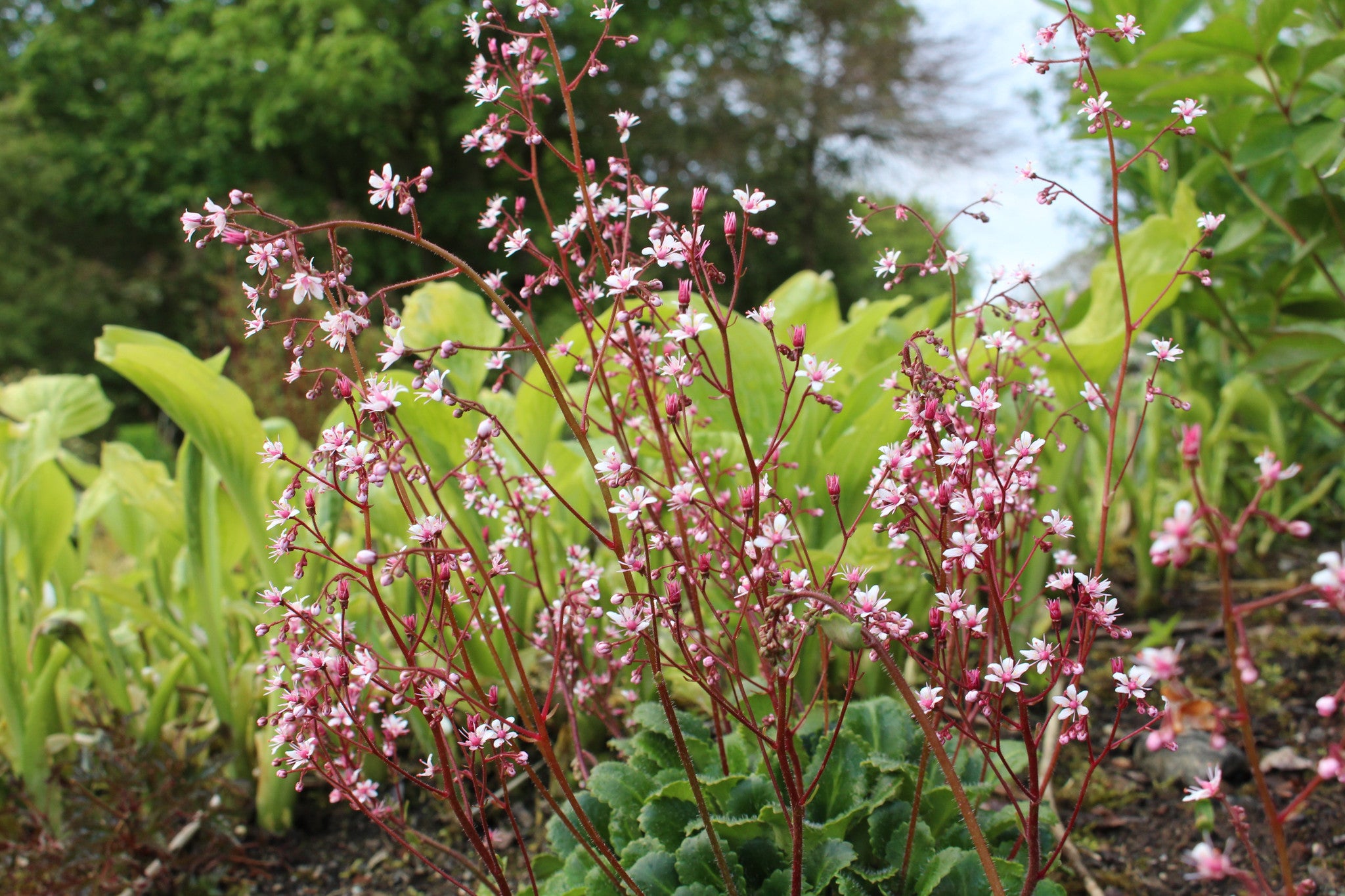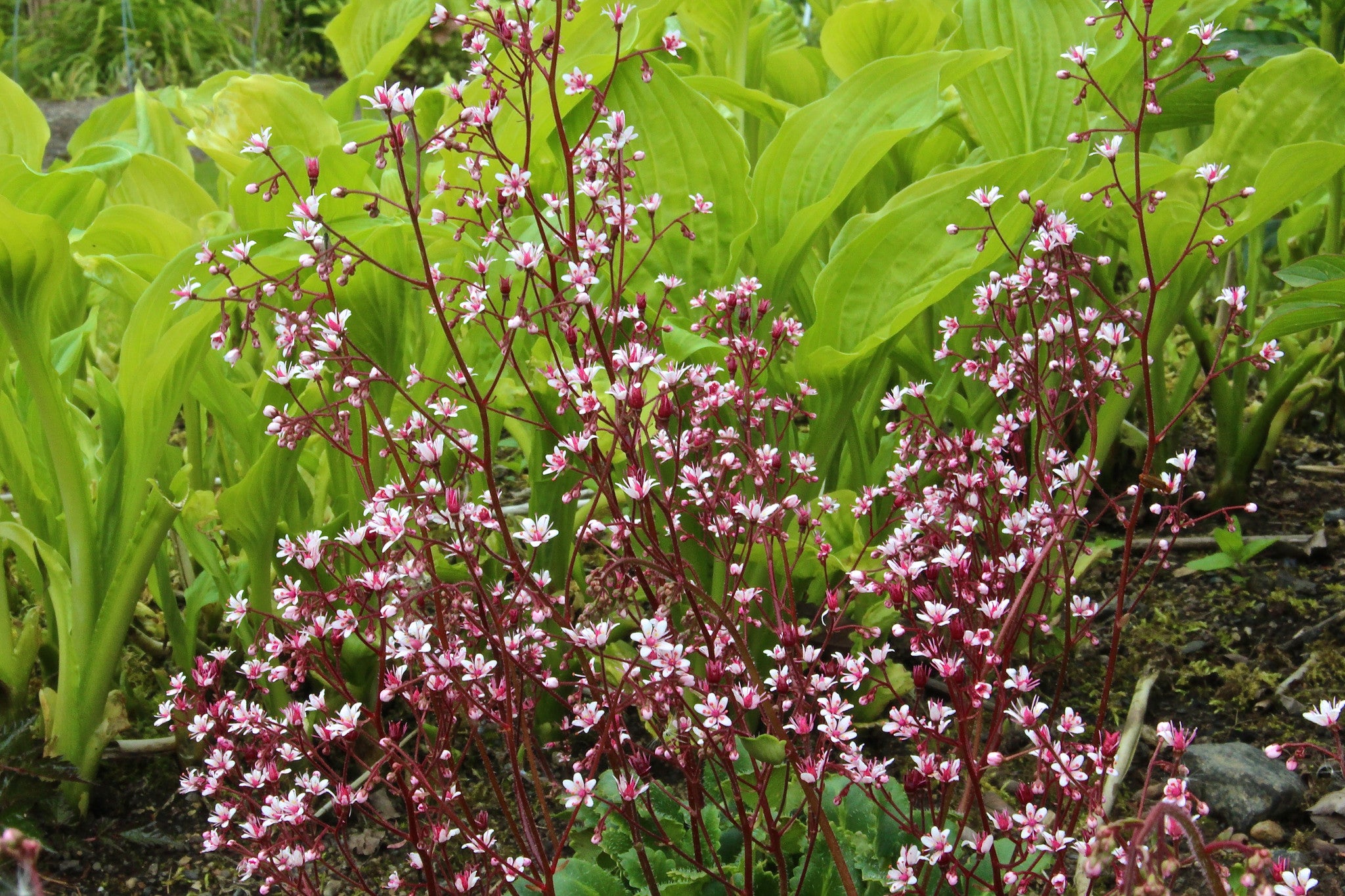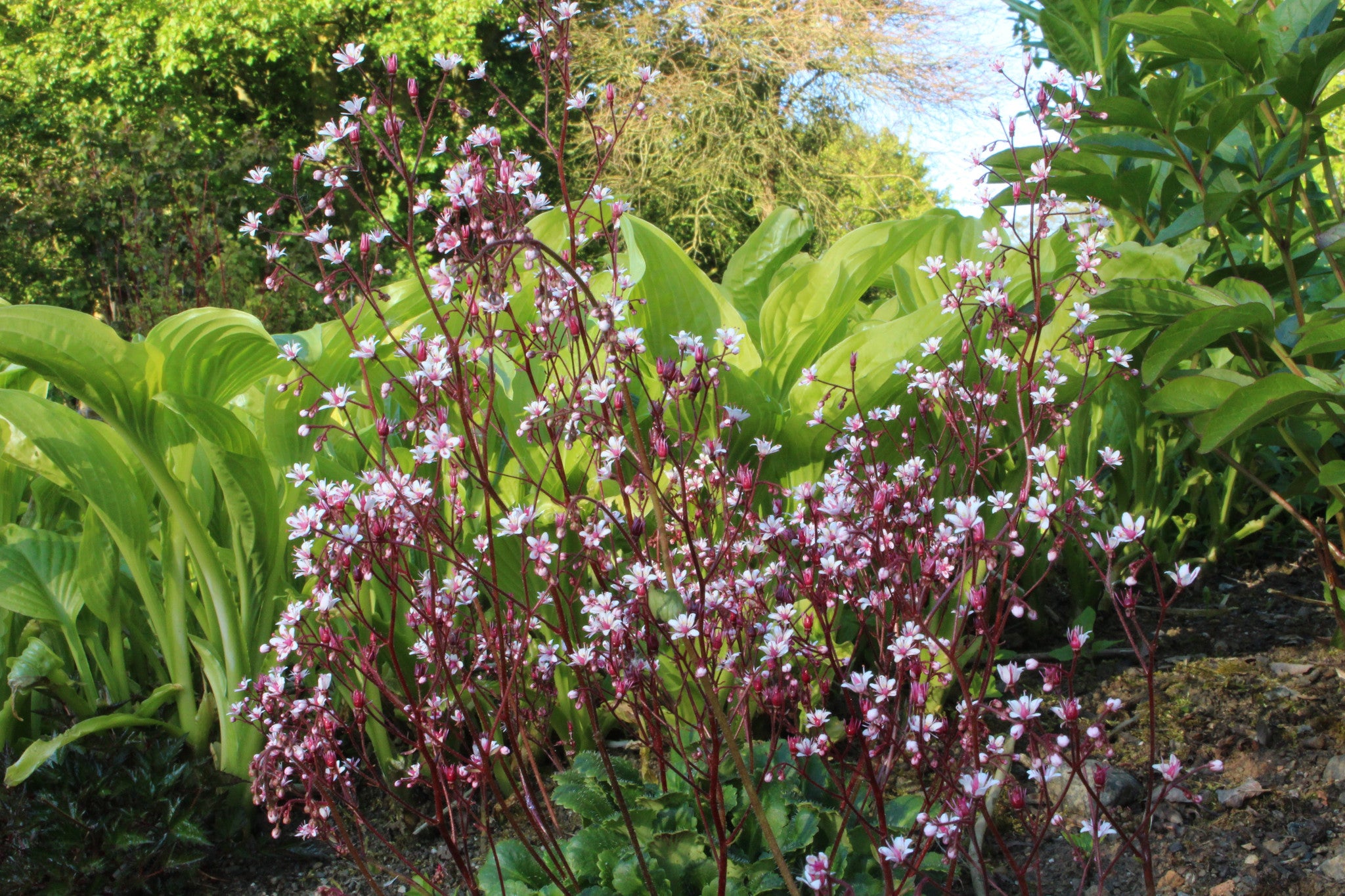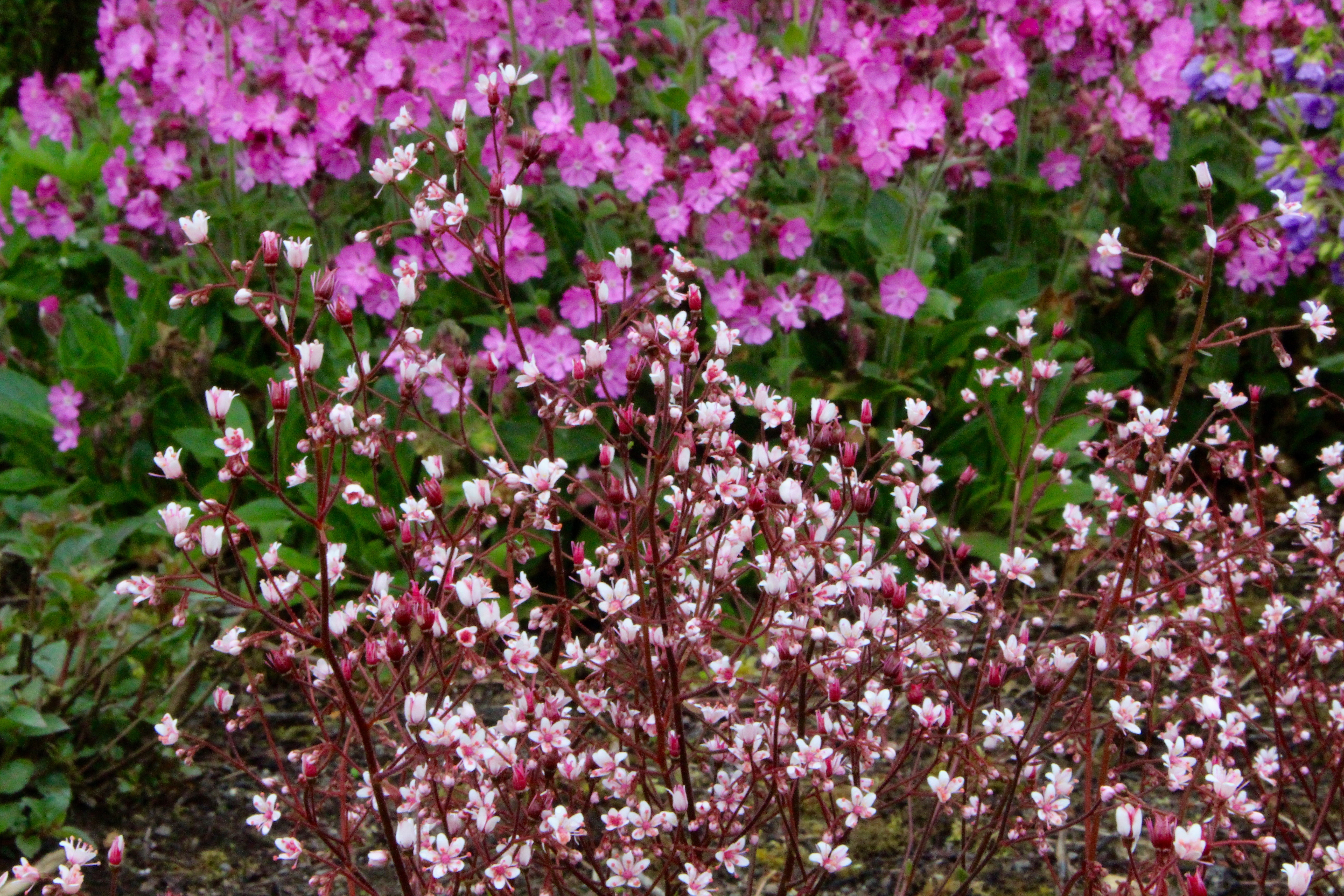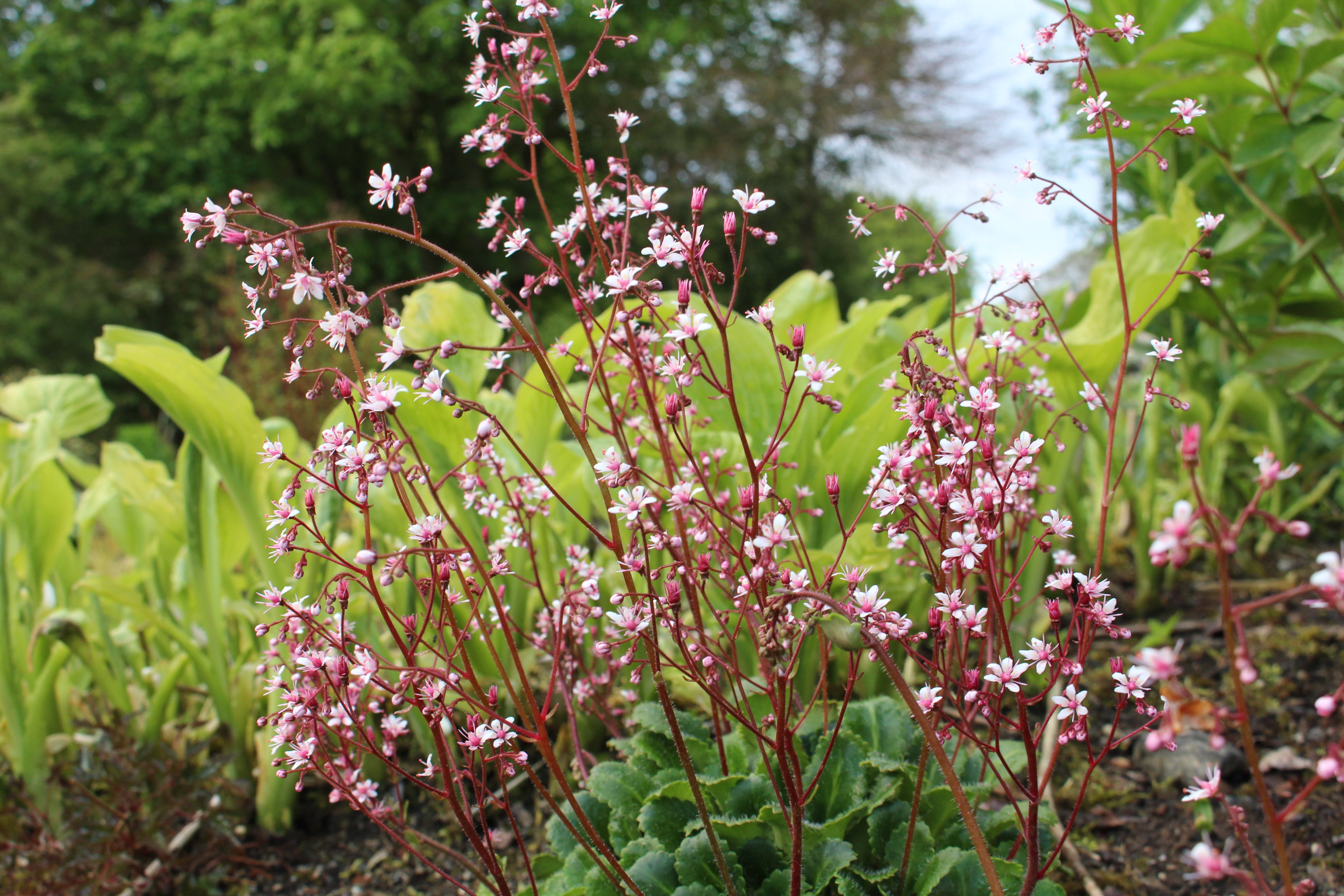Saxifraga x geum Dixter form (11)
Approx. 0.5 litre pot
About this cultivar:
Saxifraga x geum Dixter form (11) is a form of the x geum types of saxifrage. Until recently treated as a species, this is now known to be a hybrid between S. umbrosa and S. hirsuta. The form and toothing of the leaves are very variable and in the past these variations in form have been named and distributed as 'Crenata', 'Dentata', 'Gracilis' etc. This practice now seems to have ceased. S. x geum occurs mainly in the Pyrenees but has become naturalised in many European countries including Britain. This particular form makes carpeting rosettes of small evergreen leaves. Bronze-tinted branching stems carry airy sprays of white-petalled flowers appearing pink because of their crimson centres. I presume this form has something to do with Great Dixter, but I haven't seen any evidence for this apart from the name.
- Position: Full sun, partial shade
- Soil: Almost any soil
- Flowers: June, July, August
- Other features: Grows well in Ballyrobert, Suitable for Container
- Hardiness: Fully hardy, grows well in Ballyrobert
- Habit: Clump forming
- Foliage: Evergreen
- Height: 15 - 25 cm (0.5 - 0.8 ft)
- Spread: 15 - 25 cm (0.5 - 0.8 ft)
- Time to full growth: 2 to 5 years
- Plant type: Herbaceous Perennial, Alpine or Rockery
- Colour: Green, white, red
- Goes well with: -
About this genus:
Saxifraga is the largest genus in the family Saxifragaceae, commonly known as saxifrages or rockfoils. The Latin word saxifraga means literally "stone-breaker", from Latin saxum ("rock" or "stone") + frangere ("to break"). It is actually thought to indicate a medicinal use for treatment of kidney stones, rather than breaking rocks apart!
The genus Saxifrage is a very diverse genus with a wide range of semiperennial to perennial plants, covering some 480 species in total. Saxifrages can be found from the greater part of the temperate and sub-arctic zones of the northern hemispheres with some "exotic" outposts in Ethiopia, Mexico and the Arctic region. Several subalpine species from dryish spots in mountainous regions have succulent, usually nicely glaucous leaves in dense rosettes and make very dense, floriferous clusters with time. Most Saxifrage are best grown in small crevices filled with well drained soil in full sun to part shade in the rock garden. e have most of ours stuck in walls and nook and crannys. However we also have a few at the front of the border! A few of the bigger one can tolerate a lot of moisture.

